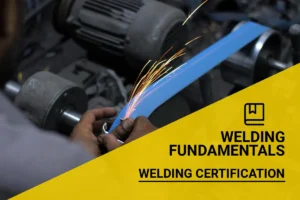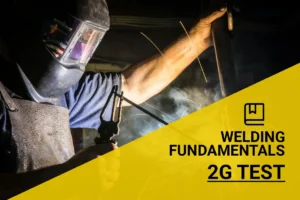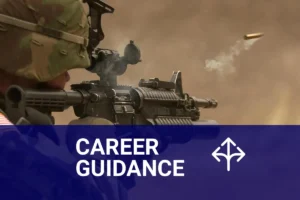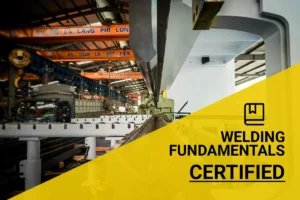What is a Journeyman Welder? – Definition, Roles, and Career Path
Published on: May 7, 2025 | Last modified: March 4, 2025
By: Joe Carter
So, what is journeyman welder? It’s crucial to grasp this term. When I started in the welding field, knowing my role as a journeyman made all the difference. It set me apart and opened jobs that required higher skills.
In this article, we’ll explore what a journeyman welder is, how they work, various types, steps to become one, factors affecting their work, unique challenges they face, aftercare tips, applications, and when to consider alternative approaches. Whether you want to know how much does a journeyman welder make or how to become a journeyman welder, I’ve got you covered!
Contents
- What is a Journeyman Welder?
- What Does a Journeyman Welder Do?
- Types Of Journeyman Welders
- Steps to Become a Journeyman Welder
- Essential Skills of a Journeyman Welder
- Factors Affecting Journeyman Welding
- Unique Issues in Journeyman Welding
- Applications Of Journeyman Welding
- When to Try a Different Approach
- Frequently Asked Questions (FAQs)
- Conclusion
- Additional Reading
What is a Journeyman Welder?
A journeyman welder is a skilled professional who’s completed extensive training. They typically handle complex welding tasks in construction, automotive, and manufacturing. Their expertise ensures high-quality work and safety standards across various projects.
What Does a Journeyman Welder Do?
A journeyman welder is a skilled professional who has completed an apprenticeship and earned state licensing. This certification means they understand welding processes like arc, MIG, and TIG welding. In the U.
S., the average pay for a journeyman welder is about $50,000 annually, or roughly $24/hour. They must know materials, safety protocols, and how to operate equipment to succeed.
Journeyman welders have expertise in various techniques and a strong grasp of welding codes. With this knowledge, they handle jobs from construction to repair. They can read blueprints and ensure structural integrity while following safety standards.
I’ve walked this path before. Working as a journeyman welder, I experienced the craftsmanship required in this role. Whether you’re curious about becoming a journeyman welder or the salary you can expect, remember that hard work and experience matter.
Types Of Journeyman Welders
What are the types of journeyman welders?
-
Pipe Welders
Pipe welders specialize in joining pipes. A journeyman in this field has the skills to connect pipe segments effectively. To become one, you’ll need to master welding processes like Stick or TIG and get certified in materials typically made of carbon steel or stainless steel.
-
Structural Welders
Structural welders focus on large frameworks, creating support structures for buildings and bridges. To succeed, you learn to weld beams and columns together, often using MIG welding on construction sites.
-
Shipyard Welders
Shipyard welders work on ships and boats, fabricating metal hulls and sections. To thrive, you need to understand plate welding techniques and safety protocols specific to marine environments.
-
Industrial Welders
Industrial welders work in factories or manufacturing settings, joining metal components for machinery or vehicles. To excel, you’ll need to know various welding methods and be familiar with equipment like CNC (Computer Numerical Control) machines. Understanding the intricacies of joining different types of wires, such as thermocouple wires, can significantly enhance your skill set in mastering thermocouple welding.
-
Underwater Welders
Underwater welders perform welding tasks while submerged, repairing structures like pipelines or ships below the surface. To become one, you must obtain diving certification along with your welding skills to ensure you’re ready for both environments.
So far we covered the different categories of journeyman welders. Next, let’s look at the process to become a journeyman welder.
Steps to Become a Journeyman Welder
Here are the steps to become a journeyman welder and what that requires.
-
Complete Required Education
Start with a high school diploma or GED. Classes in math, blueprint reading, and shop are helpful. Many community colleges and trade schools offer welding programs. Completing a 1-2 year program can enhance your skills and provide essential career guidance to make you more competitive.
It is crucial to understand the potential health hazards associated with welding, including the risk of getting sunburn from welding.
-
Gain Work Experience
Get hands-on experience—apprenticeships are essential! Look for programs that let you work under skilled welders. You typically need around 4,000 hours of on-the-job training. This real-world experience sharpened my skills and helped me secure better jobs. Proper safety measures are crucial to protect yourself while welding, and you can learn more about treating flash burns in eyes from welding.
-
Pass Certification Exams
Prepare for the AWS (American Welding Society) certification exams. These tests vary by specialty, like MIG or TIG welding. Scoring high can improve your job opportunities. I remember studying hard for my tests, but that time paid off significantly. Mastering different welding positions, such as overhead welding, can further enhance your skills and expertise. Understanding techniques for welding overhead will boost your practical know-how significantly.
-
Obtain a Journeyman Card
After gaining experience and certification, apply for your journeyman card. This shows employers you’re qualified. Check your state’s regulations, as they can differ. Holding this card can significantly increase your earning potential—think $15 to $30 per hour starting out!
-
Pursue Continuous Education
Stay updated on welding techniques and technology through workshops and courses. The welding field evolves quickly, and ongoing learning keeps your skills sharp. Join professional organizations for networking and training. Consistent education has helped me stay relevant and find new opportunities regularly. Mastering specific techniques is crucial for many welders, such as knowing how to effectively weld uphill.
We covered the steps to become a journeyman welder. Next, we will cover the essential skills required for this role.
Essential Skills of a Journeyman Welder
Understanding the key skills makes a difference for any journeyman welder. Here’s a breakdown of the critical skills you’ll need:
| Skill | Description | Importance Level |
|---|---|---|
| Welding Techniques | Mastering methods like MIG, TIG, and Stick welding. | High |
| Blueprint Reading | Understanding technical drawings and specifications. | High |
| Metal Properties Knowledge | Knowing how different materials react to heat and welding. | Medium |
| Problem-Solving | Ability to troubleshoot technical issues during projects. | High |
| Attention to Detail | Ensuring high quality and precision in all welds. | Critical |
| Safety Awareness | Following safety protocols and using protective equipment. | Critical |
These essential skills ensure a journeyman welder can tackle various challenging tasks in the field. Each skill builds upon the last, creating a well-rounded welder ready to face any project. We covered the key abilities needed for a journeyman welder. Next, we will cover the influences on journeyman welding. To understand the potential risks involved, explore how dangerous welding is.
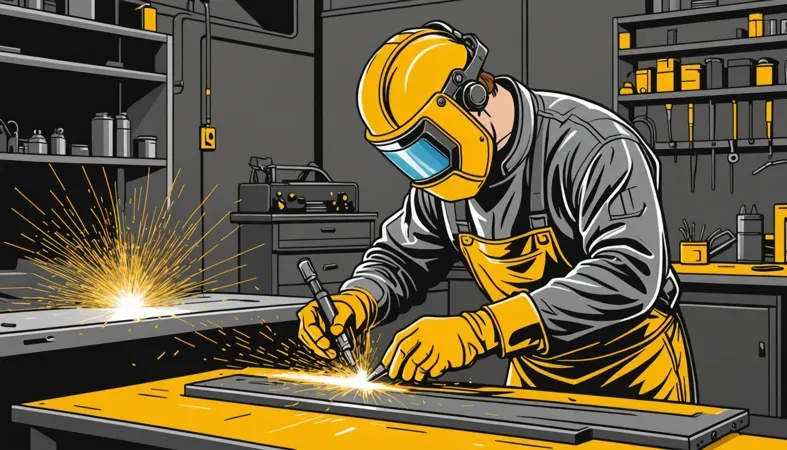
Factors Affecting Journeyman Welding
What factors influence a skilled welder’s expertise? Here’s what you need to know.
-
Skill Level
The skill level directly affects a journeyman welder’s effectiveness. For instance, a welder with over five years of experience might produce quality work with thinner materials compared to someone earlier in their career.
-
Materials Used
Different materials require specific techniques and equipment. For example, stainless steel has a melting point of about 1400°C to 1450°C (2552°F to 2642°F) and requires precise control to avoid warping.
-
Welding Techniques
Mastering various techniques, like MIG (Metal Inert Gas), TIG (Tungsten Inert Gas), and Stick welding, is essential. Each method has unique advantages: MIG is typically faster, while TIG offers greater precision.
-
Work Environment
The work environment significantly impacts performance. A comfortable workspace with proper ventilation leads to better focus and fewer accidents, enhancing the quality of welds.
-
Code and Standards Compliance
Adhering to industry codes, like AWS (American Welding Society) standards, ensures safety and quality. For example, passing a weld inspection often depends on meeting specific criteria, which can affect a welder’s job opportunities. Proper technique is essential, especially when learning how to weld pipe with 6010 electrodes efficiently.
So far we covered the elements influencing journeyman welding. Next, let’s look at the distinctive challenges faced in journeyman welding.
Unique Issues in Journeyman Welding
Let’s look at the unique challenges a journeyman welder may face.
-
Certification Longevity
A journeyman welder must keep certifications up-to-date or lose credibility. Check expiry dates and schedule renewals early.
-
Health Risks Specific to Welding
I’ve been down this road: damage from fumes and UV exposure can affect journeyman welders. Use proper PPE (Personal Protective Equipment) and get regular check-ups.
-
Technological Advancements
A journeyman welder faces rapid changes in tools and machines. Stay current through training courses to utilize new technology.
-
Job Market Fluctuations
A journeyman welder experiences fluctuations in job availability. Diversify skills and network frequently to stay ahead.
-
Apprenticeship Challenges
A journeyman welder may find it difficult to mentor apprentices effectively. Develop effective teaching methods to guide new welders.
Applications Of Journeyman Welding
Journeyman welding has various applications, including:
- Aerospace Manufacturing: This involves building and repairing aircraft components. The precision of this skill ensures high safety standards, making it popular in this field.
- Pipelines and Offshore Structures: Journeyman welders create and maintain pipelines for oil and gas. Their expertise prevents leaks, which is crucial for environmental safety and compliance.
- Heavy Machinery Repair: In agriculture and construction, a journeyman welder repairs large equipment. Efficient repairs minimize downtime and costs, maintaining steady workflow.
- Shipbuilding: This includes fabricating and repairing ships and submarines, where the strength and durability of welds are vital for withstanding harsh marine conditions.
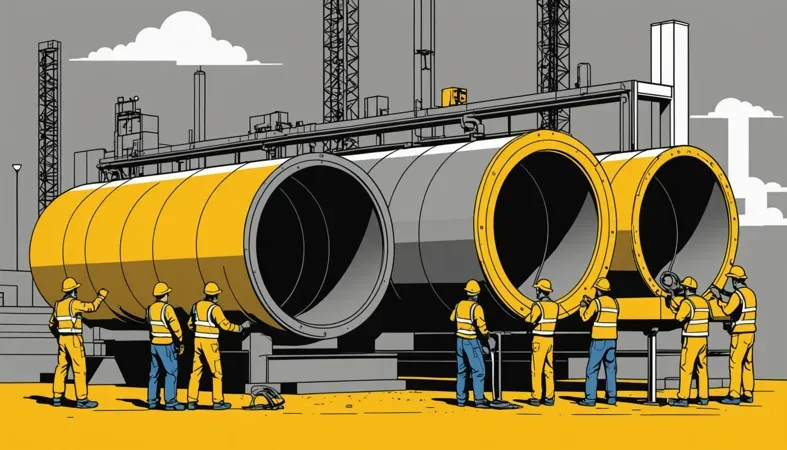
When to Try a Different Approach
If you’re looking for alternatives in the welding field, consider options like certification programs or trade schools, such as Lincoln Tech and Universal Technical Institute. These methods can sometimes provide quicker access to hands-on experience and specialized training. Here’s a nugget of wisdom I’ve picked up along the way: Sometimes direct paths aren’t for everyone, and alternatives might fit your needs better.
You can also explore apprenticeships to gain experience while earning a wage. Many companies, such as Miller Electric, offer these programs. They’re an excellent way to build your skills and network within the industry, laying a solid foundation for your career as a welder.
Frequently Asked Questions (FAQs)
Now let us look at some FAQs I typically get asked.
How Much Does a Journeyman Welder Make?
Journeyman welders make about $50,000 to $70,000 yearly in the US. This varies based on location, industry, and experience level. According to the Bureau of Labor Statistics, welders in high-demand states like Texas and California may earn more than this range. For those looking to enhance their skills, gaining proficiency in the techniques of cutting welds can be a valuable asset in the field.
What is a Journey-level Welder?
A journey-level welder is a skilled welder who’s completed an apprenticeship or equivalent training. These welders are proficient in multiple welding techniques and can work independently. Most journey-level welders earn higher pay and get more job opportunities due to their expertise.
What Does Being a Journeyman Mean?
Being a journeyman means you’ve mastered a trade through an apprenticeship and on-the-job training. As a journeyman, you hold a recognized skill level, allowing you to take on complex tasks. This status typically requires 2-4 years of experience, which boosts employability and earnings.
How Do I Become a Journeyman Welder?
To become a journeyman welder, you need to complete an apprenticeship program. This typically involves 2-4 years of training under experienced welders. After that, passing a certification exam, like the ones from the American Welding Society, proves your skills.
How Much is the Highest Paid Welder?
The highest-paid welders can make over $100,000 per year in specialized industries like underwater welding. Based on data, these welders possess rare skills, enabling them to command premium pay. Experience and location can greatly influence these figures.
Conclusion
That’s everything I wanted to share with you. We covered what a journeyman welder is, how they work, the various types of these welders, the steps to become one, factors influencing their work, unique issues they face, inspection tips, applications, and when to consider different approaches. I hope these insights help clarify this role in welding for you.
So, what is a journeyman welder? Simply put, it’s a skilled welder who has completed their apprenticeship and attained a certification. I hope these welding tips prove valuable to you. With the right training, typically around 3-5 years, and understanding of different welding techniques, you can excel in your welding career.
For more information and resources on welding, feel free to revisit our homepage at What is Welding.
Additional Reading
- Little, R. L. (1999). Welding and Welding Technology. New York, NY: McGraw-Hill Education.
Joe Carter is a retired welding professional with over 40 years of hands-on experience in the industry, spanning ship repair, structural welding, and even underwater projects. Joe is a master of MIG, TIG, and Stick welding. Passionate about mentoring the next generation of welders, Joe now shares his decades of expertise and practical insights to help others build rewarding careers in welding.
6010 Electrode, American Welding Society, Career Path, Certification Exams, Industrial Applications, Journeyman Welder, MIG Welding, Welding, Welding Techniques, Welding Training

